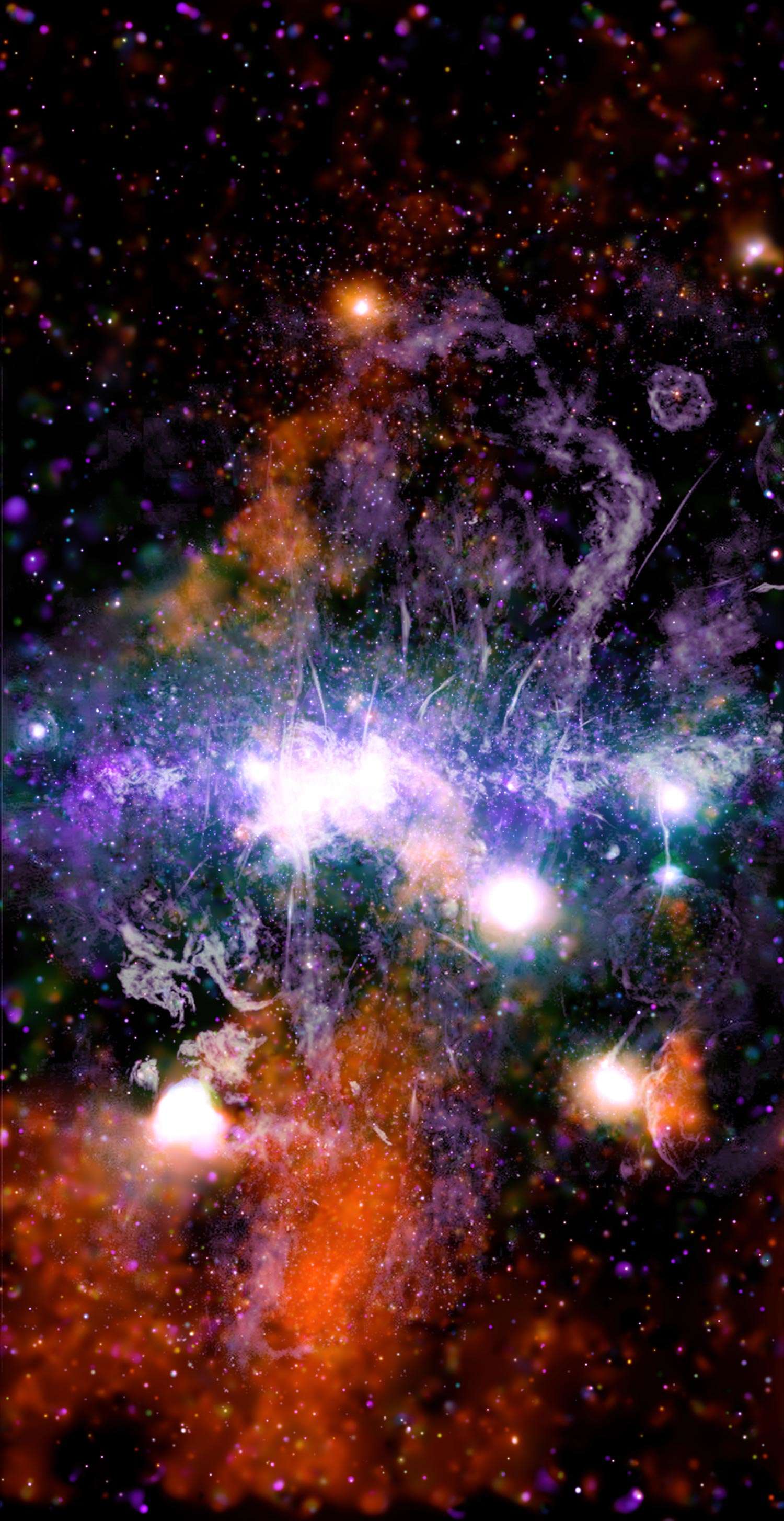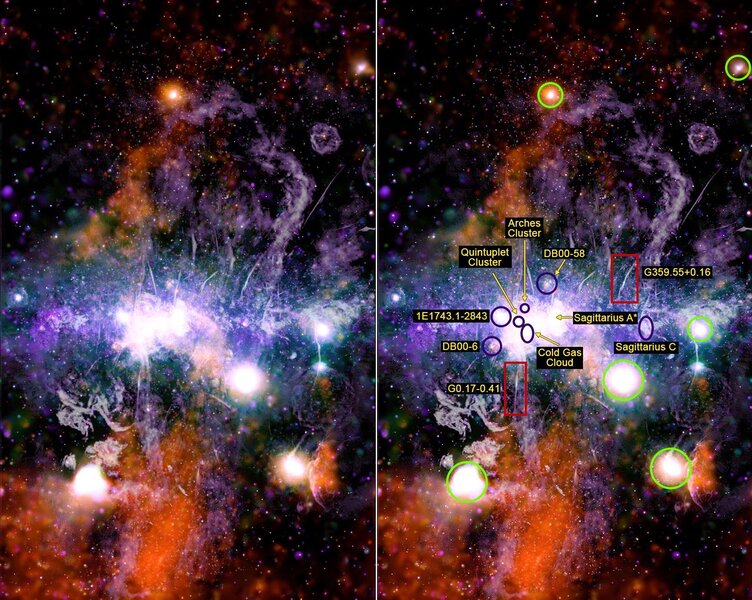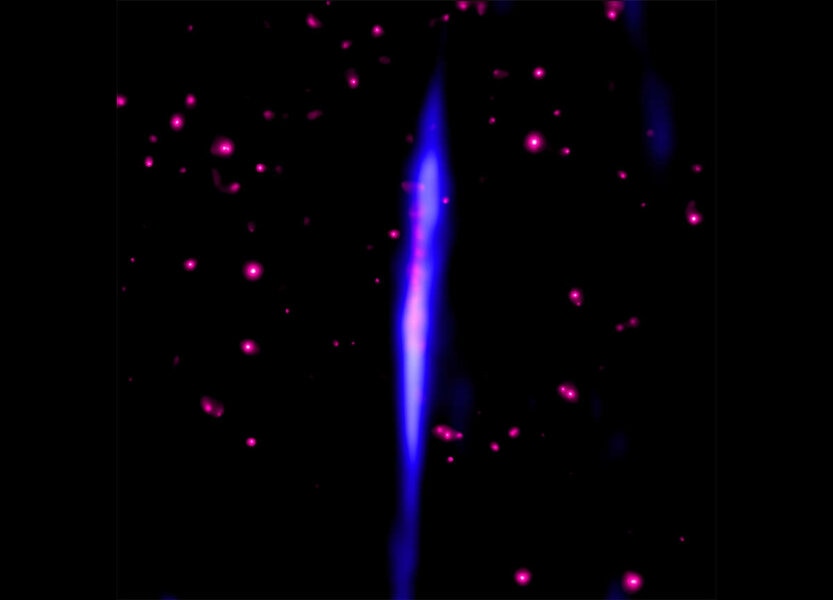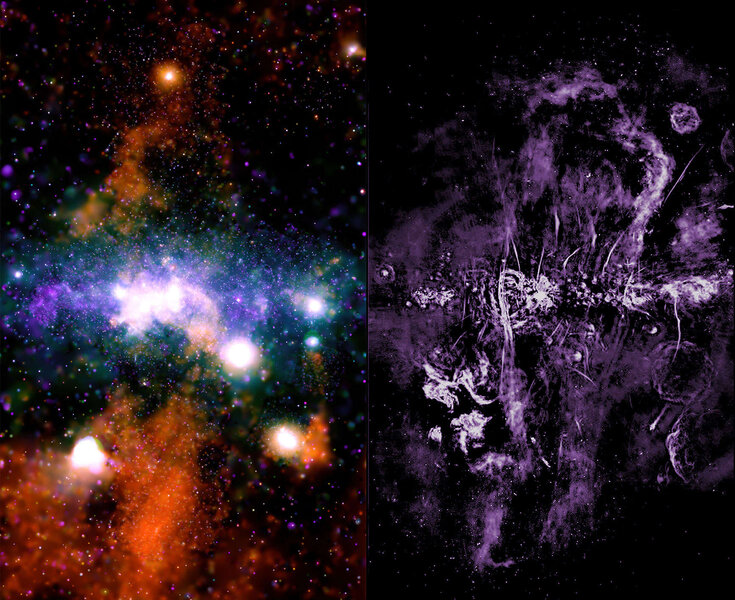Create a free profile to get unlimited access to exclusive videos, sweepstakes, and more!
Incredible image: Gorgeous magnetic chaos in the galactic center

The center of our galaxy is a terrifying maelstrom of matter and energy.
You'd think having a supermassive black hole there would be the major source of the chaos, but in fact it's a bit player. Instead, the frenzy at the Milky Way's heart is created by exploding stars, regions of massive star birth, and streams of hot gas. And pulling the strings on all this — almost literally — are powerful magnetic fields.
The best way to see this is by looking at opposite ends of the spectrum, in this case quite literally: high-energy X-rays and low-energy radio waves. And when you do, what you see is magnificent pandemonium:
WHOA.
This image shows a huge region of the sky, over 2 x 4 degrees, covering the area of about 50 full Moons — at the scale of the galactic center about 26,000 light years away, it's an area 1,000 x 2,000 light years across. The galaxy is a flat disk, and we see that as a broad line running horizontally through the middle of this image (the exact center of the galaxy is located on the right side of the very bright white patch in the middle of the image). And holy moly, what a mess it is.
It's hard to know where to begin. But the majority of what you're seeing here is hot gas (shown with increasingly energetic X-rays in red, green, and blue) that's either just hanging out there, or blasted out by exploding stars, or forming new stars in enormous stellar nurseries. This gas is so hot it glows in X-rays, and this image is a mosaic of 370 images taken by the space-based Chandra X-ray Observatory over two decades from 1999–2019.
Added to this mosaic are observations from the MeerKAT radio observatory in South Africa (shown in light purple and gray). Although radio waves are low energy, they can show physical mechanisms with lots of energy, including intense magnetic fields. Electrons spin around the magnetic field lines, emitting radio waves called synchrotron radiation.
This means the MeerKAT observations show us where the magnetic fields lines are, and you'll notice that tends to form long, thin streamers aligned pointing away from the galactic center. The center of the galaxy is crowded, with massive star clusters like Arches and the Quintuplet, as well as exploding stars. This tends to heat up gas and blow it out from the center, though the exact mechanism involved isn't known. This gas carries its own magnetic field with it, and gas clouds can form long streamers at the juncture where they collide. Their magnetic fields interact, reconnect with each other, and excite the gas in those incredibly thin tendrils.
One tendril, called G0.17-0.41, appears to be more perpendicular to the galactic plane. It has radio emission extending for a hundred light years — a quadrillion kilometers — but is only only a few light years wide, and only the brightest 20 light year stretch is emitting X-rays. The magnetic fields can apparently constrain the gas extremely well.
You can also see huge plumes of gas (look for the mostly lilac elongated bubble above the galactic plane, and the red swath below) that are being blown out. We see things like this in other galaxies, and the ones seen here may be related to the much, much larger Fermi bubbles seen in gamma rays which extend for tens of thousands of light years from the galaxy's core.
Something with a whole lot of energy available is pushing that gas at high speed away from the galactic center, and it's not clear what it is. Astronomers argue over whether it's from multiple supernovae blasting out gas, or the combined might of thousands upon thousands of young massive stars born there that also blow mighty winds. There's also the supermassive black hole Sgr A* not far away, which can power some pretty violent processes, and may play a role as well. No one really knows.
Can you blame them? Look at that region! Yikes.
I tease a geologist friend of mine sometimes, telling her the Earth lies to us. A basic concept in geology is that deeper stuff is older, since things tend to pile up over time… unless there was uplift, or a syncline, or an earthquake, or erosion, or or or. Trying in reality to figure out what things happened when in geology is a mess. Unlike astronomy, of course, I say haughtily, where things tend to be so far apart that looking at them is relatively easy, and it's not too hard to see what's what.
<cough> Yeah. I'll have to show her this image. And apologize.


















